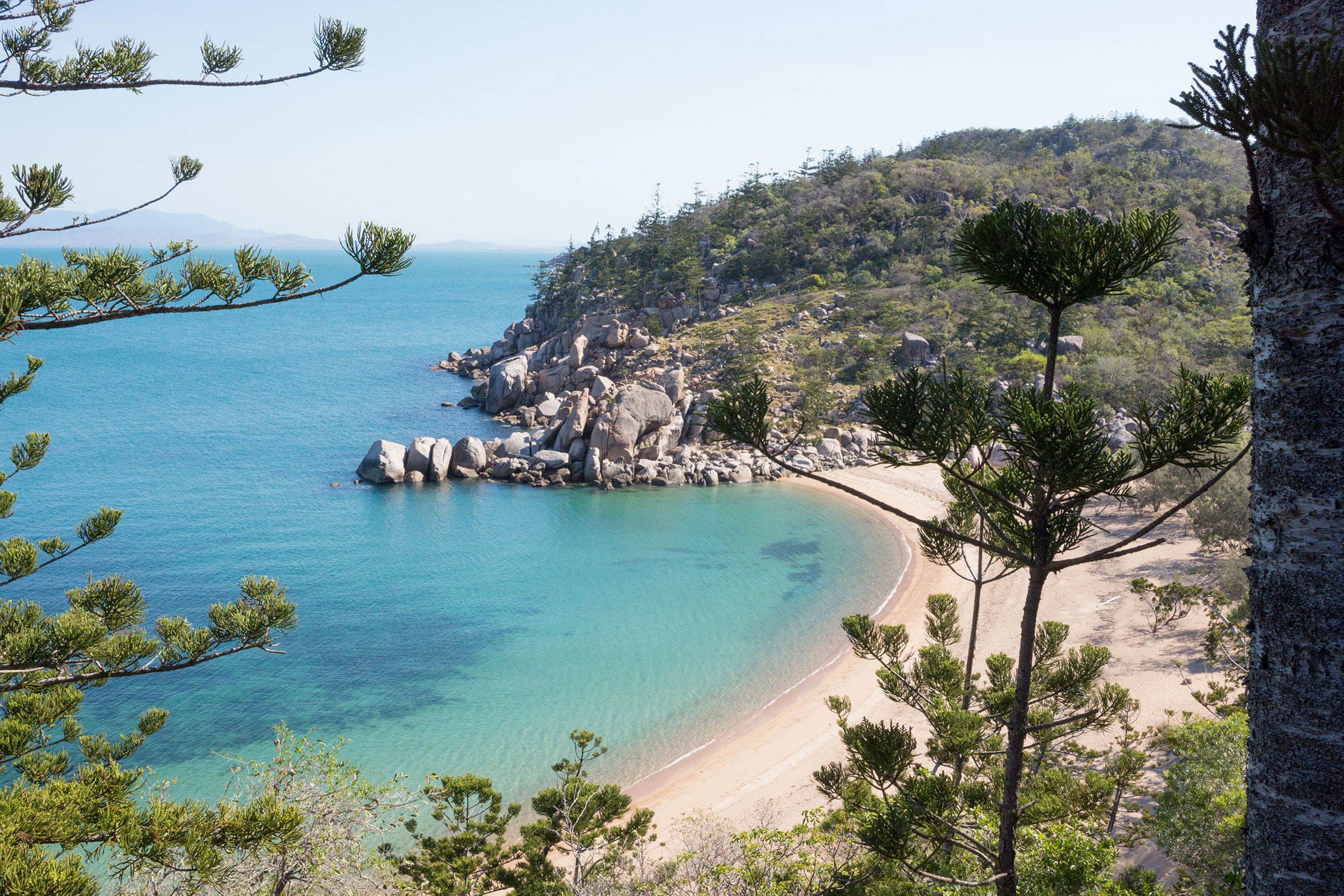
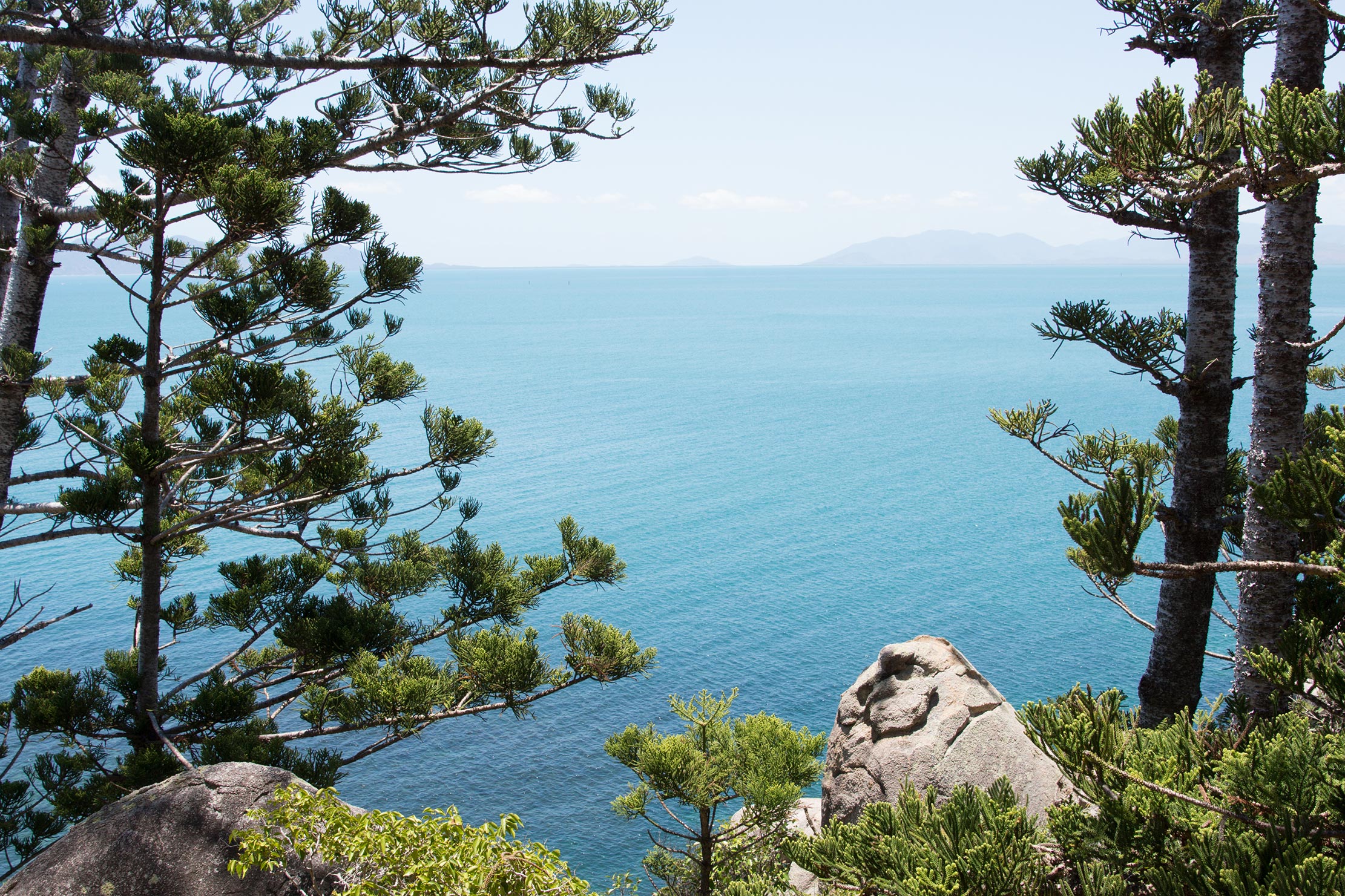
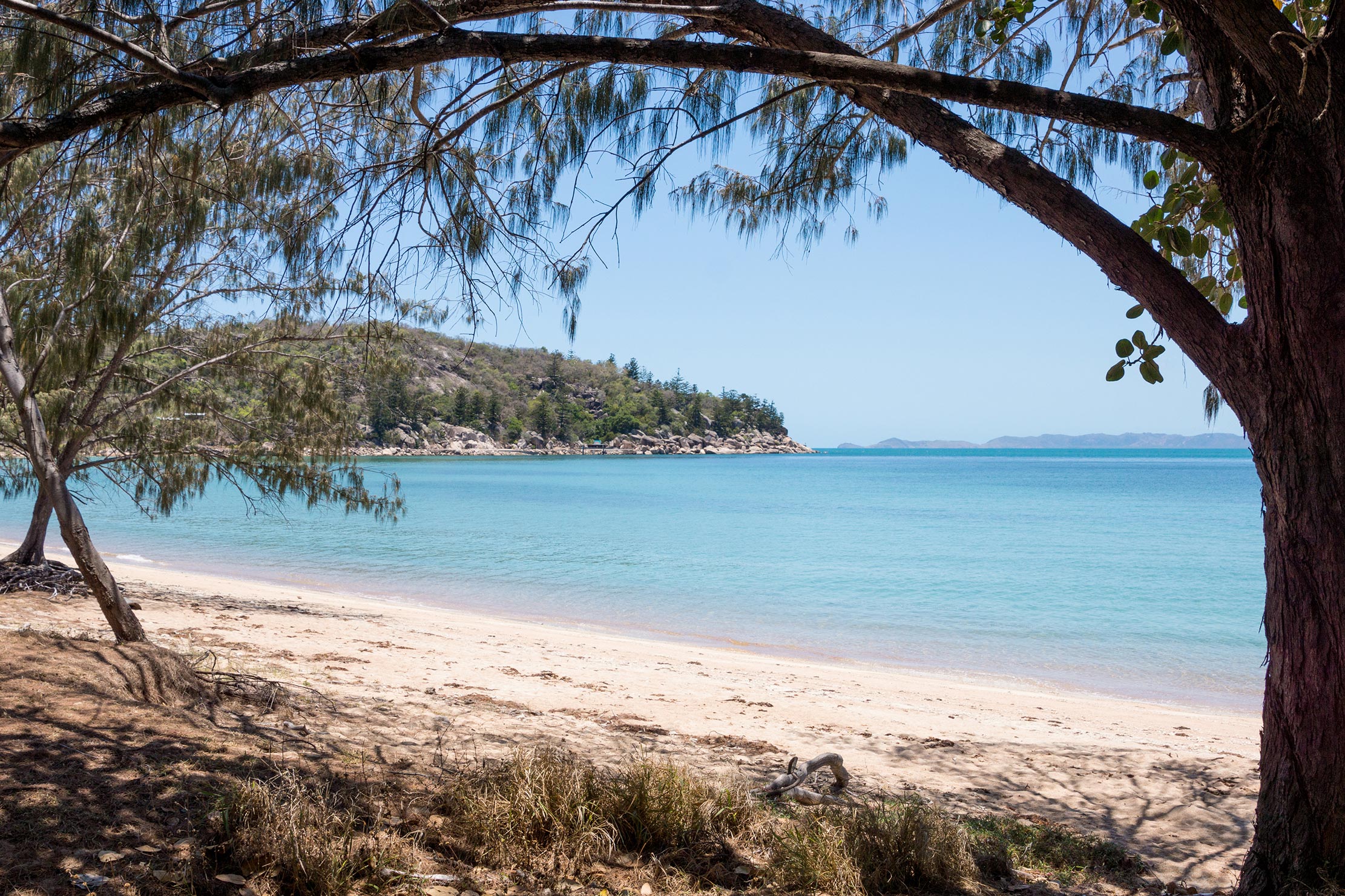
Situated within the Great Barrier Reef Marine Park, Magnetic Island offers stunning natural beauty, pristine sandy beaches and unspoiled bushland.
Boasting 320 days of sunshine, you can enjoy the turquoise waters, meandering walking tracks and a variety of outdoor activities all year round.
With 25 kms of bush-walking tracks and more than 15 bays to explore, there is a lot to see and do.
How to get here …
A high-speed catamaran ferry comes direct from Townsville, taking only 20 minutes and operates all day every day. Buses, taxi’s, tours or one of our hire cars, make it easy for you to get around the island.
Things to do …
- Enjoy scuba diving over the coral reef. The famous S.S. Yongala wreck is considered one of the top five dive sites in the world
- Launch a kayak and paddle around the bay
- Jump on a jet ski and explore the secluded beaches
- Go horse riding through the bush and on the beach
- Drop a fishing line off the jetty at Picnic Point
- Go boating around the island
- Go sailing on the Old Sailing Sloop Providence
- Walk along the spectacular trails through the National Park
- Play golf at the Magnetic Island Country Club
- Dine at one of the many local restaurants
- Pick up a bargain at the markets
- Watch the magnificent sunsets
- You may even get to feed a rock wallaby …
Rock Wallabies Magnetic Island
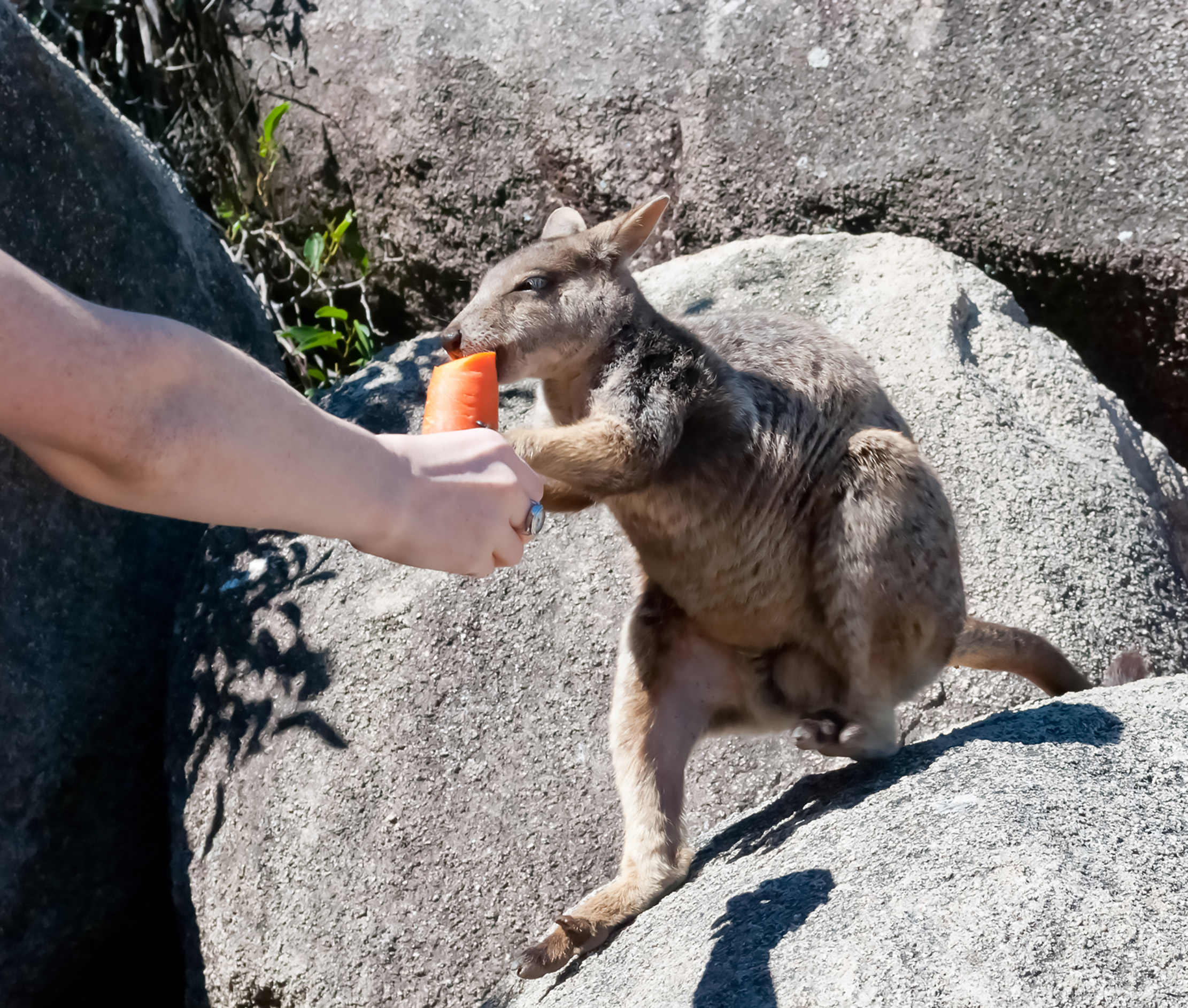
Magnetic Island rock wallabies or more specifically – Allied Rock Wallabies (Petrogale assimilis). Distinguished by a pale cheek stripe and hip stripe. As well as Magnetic Island they live on Palm Island. They also live on the mainland between Townsville and the Burdekin River but I have never seen them on the mainland.
When you stay at Arcadia Beach guest House, chances are you too will have some of these cheeky late afternoon visitors.
Black Cockatoos
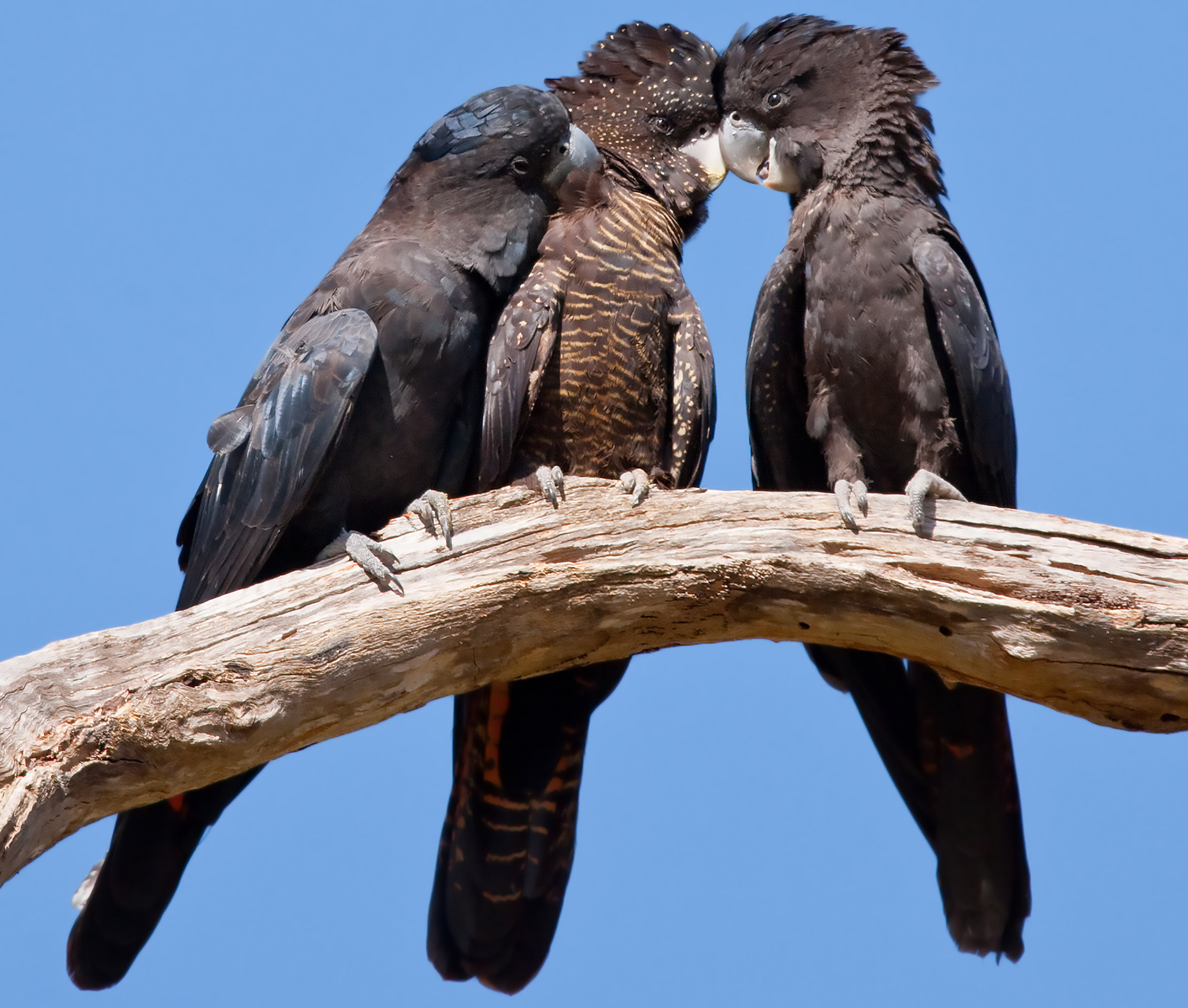
During the dry season, when the trees are fruiting, it is quite common to see red tailed black cockatoos (Calyptorhynchus magnificus) feeding on the sweet flesh of the beach almond fruit. The black males have startling bright red bands in the tail, which splay out in flight. The females, and young for the first few years, have yellow speckles and bars on their dark plumage with splashes of orange in their tails. The cockatoos ‘prune’ the twigs with fruit, crack the outer nut, and leave the nuts to soften up on the ground under the trees. They return up to a week later to eat the softened nut.
The red tailed black cockatoo is a seasonal visitor to the Island, usually flying over from Pallarenda on the mainland when there is a plentiful supply of beach almonds or other similar native fruits like the spiky she-oak nuts.
